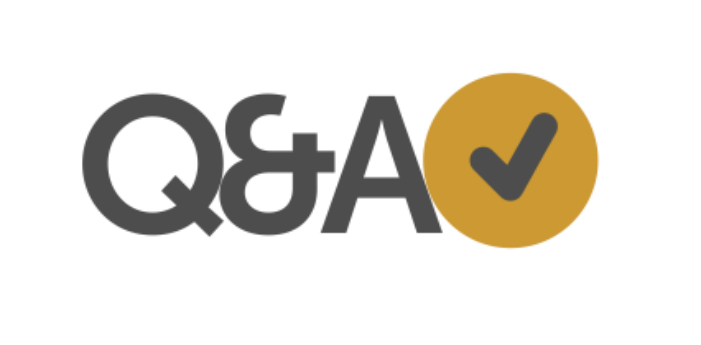Here is our microfinance bank interview questions and answers, for veryone aspiring, and looking forward to working with the Microfinance bank.
This guide will help position your mind, and as well give you an idae on what o expect when faced with your interviewer.
Having a background knowledge about the bank will sure be a plus to you, and an edge over others. One thing thaat s very importan also is gaining proficiency in communication, this will increase your chances of getting hired faster.
We’ve compiled a list of 20 Frequently Asked Microfinance Bank Interview Questions and Answers, that are unique to the microfinance industry, along with tactical approaches and well-considered sample answers that will demonstrate your knowledge and enthusiasm for changing the world via your work, to help you go into your next interview with confidence.
Table of Contents
History of Microfinance
The idea of microfinance is not new. These kinds of small businesses have been around since the 18th century. The Irish Loan Fund system, which Jonathan Swift developed in an effort to help destitute Irish citizens, is credited with being the origin of microlending. In the 1970s, microfinance gained widespread popularity in its current incarnation.
The first institution to draw notice was the Grameen Bank, which Muhammad Yunus founded in Bangladesh in 1983.
The Grameen Bank offers loans to its customers, but it also recommends that they sign up for its “16 Decisions,” a simple set of steps that the impoverished might do to better their lives.
From asking to end the custom of giving dowries to newlyweds to maintaining clean drinking water, the 16 Decisions cover a broad range of topics.
For their contributions to the development of the microfinance sector, Yunus and the Grameen Bank were given the Nobel Peace Prize in 2006.
Around the globe, there exist further microfinance operations. Some larger entities collaborate closely with the World Bank, whereas smaller groups have separate operations in many countries.
Through the use of criteria like poverty level, geography, and kind of small business, some organizations provide lenders the flexibility to select precisely who they wish to assist.
See more: I Accepted a Job Offer But Got Another Interview | What Should I Do?
What is Microfinance?
Low-income people or groups who would not otherwise have access to financial services can take advantage of microfinance, also known as microcredit.
Microloans can be as little as $50 or less than $50,000, however the majority of microfinance organizations offer lending services.
Nonetheless, a lot of banks provide other services such microinsurance products, checking and savings accounts, and some even provide business and financial education.
Ultimately, the aim of microfinance is to enable the poor to achieve self-sufficiency.
Microfinance bank interview questions and answers.
Terms of Microfinance Loans
Microfinanciers must impose interest on loans, just like traditional lenders, and they set up particular repayment schedules with installments due on a regular basis.
Certain lenders mandate that borrowers save a portion of their earnings into a savings account, which serves as a safety net in the event of a default. The borrower has just accrued additional savings if they successfully return the debt.
Microlenders frequently aggregate borrowers as a safety net since a large number of applicants are unable to provide collateral. Recipients settle their bills collectively after obtaining loans. Since everyone’s contributions are necessary for the program to succeed, there is a sort of peer pressure that can aid in ensuring payback.
For instance, someone can ask the loan officer or other group members for assistance if they are having problems using their money to launch a business. Recipients of loans begin to build a solid credit history through repayment, opening doors to bigger loans down the road.
Even though these borrowers frequently meet the criteria for being considered “very poor,” the average rate of return on microloans is frequently higher than the rate of return on more traditional types of finance.
One of the first microlenders, Grameen Bank in Bangladesh, for instance, claims an average repayment percentage of 98%.
Read related post: 20 Frequently Asked Product Manager Interview Questions In Nigeria
Advantages of Microfinance
Microfinance-related businesses have afforded direct or indirect benefits to millions of people. As of 2021, about 120 million people were estimated to have benefited directly from microfinance-related operations by the international charity Consultative Group to Assist the Poor, situated in Washington.
It is worth noting that a mere 1.7 billion individuals do not have access to basic financial accounts, and only a small portion of the world’s impoverished can access these services.
Microfinance Bank Interview Questions and Answers
Whether you’re applying for a position in program development, client education, or loan distribution at a microfinance company, you should be ready for questions that will test your commitment to uplifting marginalized populations as well as your technical expertise.
#1. When a client has no documented financial history, how do you evaluate their creditworthiness?
With consumers frequently lacking typical financial records, it is imperative to comprehend the subtleties of risk assessment in microfinance. Candidates must to be ready to go over several approaches to assessing risk and figuring out repayment possibilities.
This question assesses their creativity as well as their knowledge of the particular socioeconomic elements that impact clients of microfinance.
Candidates should talk about their familiarity with or expertise with instruments such as social collateral, community-based lending models, and psychometric testing in order to properly react.
They might also talk about the in-person interviews they would do to gauge a client’s business acumen, reliability, and social connections, or the ways they would use proxies for financial behavior, like utility bills or savings trends.
Their answer might also be strengthened by demonstrating an understanding of the regulatory landscape and any pertinent technologies utilized in the microfinance industry for alternative credit scoring.
Example:
“Determining a client’s creditworthiness who doesn’t have a formal financial history calls for a sophisticated strategy that makes use of both cutting-edge technologies and community knowledge.
In this situation, psychometric testing has shown to be a useful tool for assessing a client’s character qualities, credit-related attitudes, and entrepreneurial potential. When paired with data analytics, this psychological profiling can rather accurately anticipate payback behavior.
In addition, I would examine other data points that can be used as stand-ins for financial discipline, including the constancy of minor savings contributions or the regularity of utility payments.
When combined with in-depth in-person interviews to assess social and business acumen, these techniques offer a thorough picture of a client’s capacity for responsible credit management even in the lack of official financial documentation.
#2. Which tactics would you use to reduce the amount of loans that default in microfinance?
In their discussion of striking a balance between low default rates and financial inclusion, applicants ought to highlight their inventiveness in risk management techniques.
These tactics ought to support the social goals of microfinance, such strengthening links within the community or educating people about money management while maintaining the viability of the organization.
In response, candidates need to highlight a multifaceted strategy that encompasses comprehensive customer evaluation, financial literacy instruction, and product development customized to the needs and repayment capacities of the client.
They may also discuss how crucial it is to establish trusting bonds with customers in order to motivate them to make payments, how group lending models can benefit from peer pressure, and how to create flexible repayment plans that take into consideration the irregular income patterns of the customers that microfinance organizations serve.
Related article: 20 Frequently asked ics outsourcing interview questions
Example:
“A thorough customer assessment procedure is essential to minimizing default rates in microfinance lending. This entails knowing the clients’ business models and cash flow patterns in addition to assessing their creditworthiness.
By using this, we can customize financial products to better fit their revenue cycles and increase their repayment capacity.
Including financial literacy classes can also provide clients with the knowledge and abilities they need to handle their money wisely, lowering the chance of default brought on by poor financial management.
Using the group lending model can also be a very effective strategy because it makes use of peer pressure and social collateral to guarantee repayment of debts.
This strategy can greatly increase payback rates when combined with flexible repayment plans that take into account the frequently erratic income of microfinance clients.
In addition, sustaining solid client connections cultivates a sense of accountability and trust, both of which are essential in an industry where official documentation is rarely present.
When these tactics are used in concert, they foster an atmosphere that is favorable to low default rates and sustainable lending practices.
#3. Give an account of your regulatory compliance experience in the microfinance setting.
While talking about regulatory compliance, candidates should stress how crucial it is to microfinance’s operational integrity, client safety, and risk management.
The inquiry aims to test the candidate’s knowledge of intricate regulatory frameworks and their dedication to the social goal of microfinance.
In your answer, please describe your familiarity with particular microfinance-related regulations, such as interest rate caps, know-your-customer (KYC) protocols, and anti-money laundering (AML) rules.
In addition to highlighting any training you’ve received or conducted, talk about how you’ve put policies or processes into place to guarantee compliance.
Mention any regulatory audits or inspections you have dealt with, along with the results. Stress how crucial it is to follow the rules in order to preserve the institution’s standing and the confidence of its customers.
Microfinance bank interview questions and answers.
Example:
“I have extensive experience with regulatory compliance in the microfinance industry, especially with respect to upholding AML rules and putting in place strong KYC protocols.
I’ve had a hands-on role in creating and improving compliance frameworks to satisfy the particular legal requirements of the countries where microfinance institutions conduct business.
This required a thorough examination of national and international laws to guarantee not just compliance with the law but also the protection of our clients’ confidence and the reputation of our organization.
I oversaw a team that completely redesigned our KYC procedures during my time there, greatly enhancing our capacity for risk assessment and customer due diligence.
This preemptive strategy strengthened our defenses against any financial abuses and expedited the onboarding of new clients.
In addition, I have successfully negotiated multiple regulatory audits, honing my record-keeping and transparency-fostering skills. The effectiveness of the compliance policies put in place is demonstrated by the audits’ favorable results.
In order to prevent compliance issues and maintain the viability and stability of the microfinance operations, it has been essential for me to maintain constant communication with regulatory organizations and stay up to date on changing legislation.
#4. How have you adapted financial products to meet the demands of those with low incomes?
Applicants should be prepared to discuss their experiences with financial services innovation and customization, particularly for low-income clients who need accessible and flexible solutions.
This question evaluates the candidate’s capacity for understanding clients’ needs and coming up with solutions that increase their financial security.
In their response, candidates must to provide particular instances of how they have modified or developed financial products, like insurance, payment plans, savings accounts, and microloans.
They ought to talk about the studies and methods of feedback they employed to learn about the demands of their customers and how these customized solutions affected their customers’ capacity for money management, opportunity investing, and overcoming adversity.
Also see: Makeup for a Job Interview | Best Advice
Example:
“Because I am aware of the particular financial difficulties that low-income people encounter, I have customized microfinance products by first performing in-depth market research to identify their demands and cash flow patterns.
For instance, realizing that rural farmers’ income is both seasonal and erratic, I created a microloan product with a flexible repayment schedule in line with the agricultural harvest season.
This modification raised the adoption of the loans and enhanced the repayment rates because farmers perceived the product as being especially tailored to their needs.
In another case, I implemented a micro-savings program that waived fees for clients to deposit irregularly sized amounts, which was essential for people with variable earnings.
By using client surveys and focus groups as a feedback loop, I was able to continuously improve these products and make sure they were really helpful.
It was clear that the clients’ efforts to accumulate savings and investments in prospects for future income growth had a positive effect on the community by making them less susceptible to economic shocks and promoting resilience and financial inclusion.
Microfinance bank interview questions and answers.
#5. Describe a campaign you spearheaded that was successful in increasing the target demographic’s adoption of microloans
A candidate’s ability to market effectively and comprehend the socioeconomic variables influencing borrowing behaviors is demonstrated by the effectiveness of their microloan distribution campaign.
Applicants must to be ready to talk about how they identify the particular needs of certain populations and design financial products to fulfill those needs.
In your response, briefly describe your campaign’s goals, the process you used to determine your target audience, and the strategies you employed to reach them. Talk about the outcomes and provide evidence to support the rise in microloan uptake.
Describe any novel or unusual tactics you used and the metrics you used to gauge their success. In the context of microfinance, your solution should demonstrate your capacity for planning, carrying out, and analyzing, demonstrating both your technical understanding and your understanding of the clientele.
Example:
Consider a recent campaign whose main goal was to increase rural women entrepreneurs’ use of microloans, as they had historically had little access to financial services.
By using data analysis and market research, we were able to identify this particular group of women and found that there was a notable lack of microfinance solutions that were specifically designed to meet their needs.
We used a multi-pronged strategy to effectively reach them, which included developing courses on mobile financial literacy, introducing a mobile app that streamlined the loan application process, and forming local connections with women-led community organizations.
To establish credibility and make sure our services were applicable both practically and culturally, we made use of these community networks.
Within six months, there was a 40% rise in the adoption of microloans, indicating significant outcomes. We monitored the progress using a combination of qualitative feedback from the borrowers and quantitative data, like the number of loans disbursed and payback rates.
Pre- and post-assessment surveys showed that the campaign’s novel use of gamification in our financial literacy products greatly enhanced engagement and comprehension of financial topics.
This strategy not only increased the use of microloans but also made sure that borrowers have the tools they needed to handle their money more wisely.
Microfinance bank interview questions and answers.
Read also: 10+ Signs You Will Get The Job After Virtual Interview
#6. Could you explain amortization further?
An accounting method called amortization breaks up a loan’s total amount into manageable, one-time payments that must be made to the lender.
Put more simply, it’s the process of repaying a debt in installments so that its book value is gradually written off.
Negative amortization occurs when the loan payment for a given period is less than the total amount owed.
#7. How are you going to figure out the debt-to-income ratio?
I would divide the entire debt by the applicant’s gross income to get the debt-to-income ratio.
#8. What does the term “charge-off” mean to you?
One kind of write-off is a charge-off. It’s the sum that, in the event that the borrower defaults on the creditor, is deemed a bad debt.
Normally, after six months without making a payment on the loan, a charge-off is announced.
#9. What needs do you believe the banking sector has in light of the ever-changing banking landscape?
This is a common question in bank interviews. This question is used by interviewers to gauge how well you comprehend the shifting demands and trends in the banking industry.
To respond, thoroughly study the state of the banking industry today and the operational tactics employed by banks.
You might also talk about how the industry has changed in terms of technology and business practices and what, in your opinion, still needs to be improved.
Microfinance bank interview questions and answers.
#10. What does loan grading mean to you?
Banks employ a categorization system called loan grading to assign a loan a grade based on several factors such as the borrower’s credit payment history, loan repayment risks, and so on.
It entails determining the nature and hazards of the loan by allocating a quality score between 1 and 6.
#11. What is the credit line?
The maximum loan amount that a borrower may obtain from the bank is known as the line of credit.
The lender borrower can easily access these cash and take them out as needed.
The borrower simply has to pay interest on the money they withdraw, and they can loan as much as needed from the entire credit limit.
Checkout these articles:
- 10 Frequently Asked Neutratech Interview Questions
- 30 Frequently Asked F1 Visa Interview Questions In Nigeria
- 20 Frequently Asked Executive Assistant Interview Questions In Nigeria
#12. What does the term “overdraft protection” mean to you?
Banks provide their customers a service called overdraft protection.
Customers can use it to move money across accounts in order to prevent unsuccessful payments, bounced checks, etc.
It is possible for customers to move funds between their current and savings accounts and vice versa.
#13. Which software banking applications are now offered by the sector?
The eight most popular financial software programs are as follows:
- Online banking platform
- Bank ATMs
- Central banking framework
- System for managing loans
- System for managing credits
- Managing investments System
- Managing the stock market System
- System of financial management
#14. What is a system for managing finances?
Banks and other institutions utilize financial management systems, which are software programs, to track and manage their revenue, assets, and outlays.
In order to maintain sustainability, this is done to optimize profits and manage money.
#15. A credit management system is necessary, but why?
A variety of questions pertaining to banks are asked during bank interviews.
Control over the financial transactions credited to account holders is aided by a credit management system.
Since credit management systems assist banks in managing credit and maximizing earnings, we require them.
By actively regulating credit terms, the system keeps bad debt and costs under control.
In addition to preventing bankruptcy, an efficient credit management system makes the funds sustainable.
Microfinance bank interview questions and answers.
See more: 20 Frequently Asked Transaction Officer Interview Questions And Answers
#16. What are banks’ sources of revenue?
The majority of a bank’s earnings comes from lending. Every loan is made at an interest rate, which provides banks with revenue.
The extra fees imposed for online bill payment, account maintenance, and other similar services also generate revenue for banks.
#17. What exactly is balloon payment?
The remaining balance due after a loan has been amortized is known as a balloon payment.
The remaining amount can be settled using either a fixed or variable mortgage, depending on the loan terms.
#18. What does SLR and CRR mean?
Banking instruments like CRR and SLR are employed to keep the economy going. The acronym SLR refers for Statutory Liquidity Ratio, and CRR stands for Cash Reserve Ratio.
The Reserve Bank of India (RBI) uses both CRR and SLR to regulate lending capacity in order to control inflation and the flow of money.
Commercial banks must maintain a specific percentage of all deposits in their current account with the RBI in accordance with CRR.
It controls the money supply, liquidity, and inflation.
SLR is an additional strategy for preserving economic liquidity, much as CRR.
Prior to making a loan to a customer, a bank must to hold a certain amount of money in cash, gold, or bonds.
The RBI sets the SLR rate are there to regulate bank credit.
Microfinance bank interview questions and answers.
#19. Can you describe the reverse repo rate and the repo rate?
A component of the liquidity adjustment facility is the repo rate and reverse repo rate.
When commercial banks run out of money, the RBI lends them money at the repo rate, which is an interest rate.
It is crucial for containing inflation since a rise in the repo rate decreases the amount of money in circulation.
The interest rate at which commercial banks deposit surplus funds with the RBI is known as the reverse repo rate.
The public is deterred from taking out loans when the reverse repo rate rises since it makes borrowing and lending more expensive.
More related post: 10 Best job interview coaching Opportunities Online
#20. How does currency convertibility work?
The ease with which a nation’s currency can be exchanged for gold or any other asset is known as its currency convertibility.
Because it makes it possible to use the currency to pay for items that are obtained internationally, it is crucial to international trade.
When a nation’s currency is difficult to exchange for another, it is said to have poor currency convertibility, which makes doing business internationally challenging.
FAQs on Microfinance Bank Interview Questions and Answers
Prepare a few concrete examples from your prior work that highlight your abilities and fit for the position to provide during the interview. Exhibit a strong work ethic, professionalism, and excitement. Additionally, remember that you only get one chance to make a good first impression, so don’t skimp on your look.
“Due to my relevant experience, industry passion, and skills, I should be hired for this role.” I can contribute to the company’s expansion having studied it. My work ethic, long-term objectives, and positive outlook all match the demands of the position, which makes me a dedicated and important contributor to the business.
As my professional goals and personal interests are so well matched, I can honestly say that I am thrilled about this position. With this employment at [business name], I have an exciting opportunity to apply and further expand my talents, which I have a good foundation in [relevant sector].
When making a professional introduction at an interview, begin with a kind salutation, include your entire name, explain your training and relevant job history, emphasize your strongest traits and skills, briefly discuss your career goals, and show your appreciation for the chance.
References
Recommended Posts
- 10 Assuring signs you will get the job after interview
- 20 Frequently Asked Facility Management Interview Questions
- 20 Frequently asked interview questions for a finance manager in Nigeria
- Top Frequently Asked Sydani Group Interview Questions And Answers
- 10 Best job interview coaching Opportunities Online





